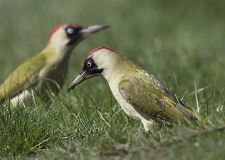Lesser Spotted Woodpeckers really are in trouble
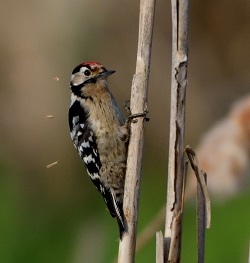
Long-term trends in the nest survival and productivity of the Lesser Spotted Woodpecker Dryobates minor in Britain
This new paper by Ken Smith and Linda Smith published online in the BTO journal Bird Study on 1st July 2020, analyses nest record data for the last 70 years and shows that Lesser Spotted Woodpeckers really are in trouble in Britain.
Ken and Linda set up Woodpecker Network in 2015 to encourage the study of Lesser Spots to try to find out why they are declining in Britain. Since then woodpecker network volunteers have found and recorded breeding outcomes from over 60 nests. This information put together with historical data from BTO nest records has enabled us to discover what is going on.
Lesser Spotted Woodpecker nests in 2020
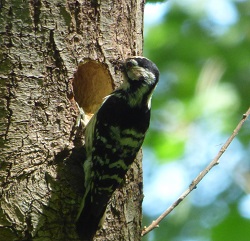
We are pleased to report that Woodpecker Network volunteers found and observed the outcomes of 12 nests this year.
This is despite the COVID 19 strict ‘lockdown being imposed on 23 March, just when everyone was poised to go out looking for breeding Lesser Spot pairs.
The lockdown was eased just in time for a few nests to be found and watched.
Late May ideal time to find Lesser Spotted Woodpecker nests
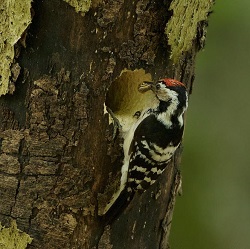
Now, late May and early June, is the perfect time to find and observe Lesser Spotted Woodpecker nests. We have lots of reports of Great Spot nests with adults feeding noisy young. Lesser Spots are usually a week or so later. From our experience of monitoring over 60 Lesser Spot nests in the last few years, this is the easiest time to find a nest. The adults will be bringing food every few minutes and as they get nearer to fledging the young start to call from the nest.
If you are able to, please visit any site where you saw a Lesser Spot earlier in the year or other likely Lesser Spot woodlands and look for a nest. here is the information needed:
Lesser Spotted Woodpecker project for photographers

For most of us fieldwork is very restricted or even impossible now because of Covid-19 restrictions but you can still contribute to a valuable project which will help Lesser Spotted Woodpecker conservation …and you can do it from your desk.
We know that many people take good quality images of Lesser Spotted Woodpeckers and by now there must be many thousands stored in the cloud and elsewhere. These may hold valuable information on food being brought to the nest that will help in the conservation of the species.
Will Lesser Spotted Woodpeckers benefit from Ash Dieback?

Dead wood beetles and their larvae are an important source of food for woodpeckers. Will dead Ash trees boost the supply of beetles?
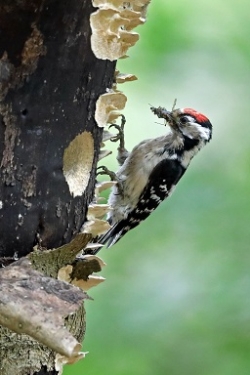 Lesser Spotted Woodpecker by Richard Jacobs 2019
Lesser Spotted Woodpecker by Richard Jacobs 2019 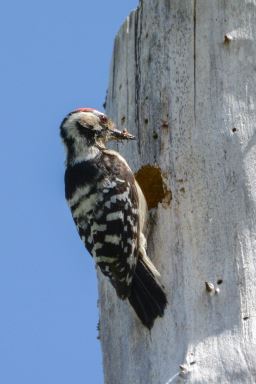 Lesser Spotted Woodpecker © Tim Preston
Lesser Spotted Woodpecker © Tim Preston
Don't confuse juvenile Great Spotted Woodpeckers with male Lesser Spots - they both have red caps!
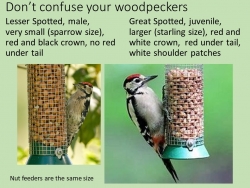
Newsletters
To download our newletters and reports, please use the links below:
Lesser Spotted Woodpeckers in 2019
